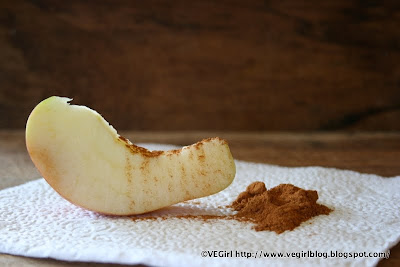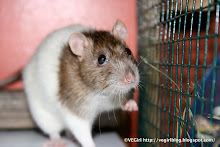Aggravated over eggs? Heartbroken about ham? And what about those little peeps? The gluten filled Easter candies? You don't want to contribute to cruelty or activate an allergic chain fire, but you want an enjoyable Easter with all the fixin's. Don't despair, I've made up a tutorial (kid approved, by the way) of tips and must-haves for a compassionately vegan, gluten-free, icky-preservatives-free, fun-filled Easter.
To start: Easter, whatever religion you view it from, is the celebration of new life. Spring. The flowers beginning to bud, the vegetables beginning to grow, the eggs being laid with the promise of chicks, and baby animals coming into the world. When considering Easter traditions and how to make them compassionately vegan and gluten-free, I have to remember that the core of the holiday isn't Peeps or chocolate bunnies. It's the celebration of new life. Of course, it's fun to have candy shaped like rabbits, and eggs, so use these tips as you will.
You can still have an Easter egg hunt! With those reusable plastic eggs easily purchased at any cheap store, chicks need not be hurt in your hunt, but neither do the children. If you use candy to fill the eggs, make sure it is all preservative and additive free. There are many great brands out there, but I find large amounts of them get very expensive (not to mention chocked full of plastic and other unfriendly earth packaging) so I would recommend whipping out some homemade treats- such as my
Peanut Butter Cups or some de-spookified treats from
Hannah's Ebook. Or, just skip the candy and go for your kid's favorite nuts or seeds. Pistachios, pecans, peanuts, almonds, hazelnuts... the possibilities are endless. Be sure to get them still in the shell, as your little one will have a blast with the nutcracker!
 Get the WHOLE family in the festivities:
Get the WHOLE family in the festivities: Have your Easter egg hunt include eggs with treats inside for the pets in your house. Homemade vegan dog treats for the pups (be sure to have the kids help out), nuts for rodents, a special fruit for rabbits, and catnip for cats are all god starting places. Go crazy and be creative!
 Chocolate solutions:
Chocolate solutions: The fact being that most chocolate bunnies on the market having cow's milk and other crap, in the past my sister and I have received our favorite chocolate bars (I love
Taste the Dream) but we recently found authentic VEGAN chocolate bunnies! Adorable, fair trade, and certified organic, these little sitting bunnies are crafted by
Sjaaks Organic Chocolates, which also has vegan Easter egg chocolates. They have a variety of other themed chocolates, and assorted vegan caramel, nut, and truffle chocolates. Be warned, however, not all their chocolates are vegan, though a good percentage are. We were lucky enough to pick up a couple bunnies (and a box of assorted nuts and chews. Yum. Yumyumyum!) at
Sidecar for Pigs Peace in Seattle last weekend.
Decorate the egg.... shaped cookies: Yeah, I know, I used to decorate blown out egg shells, too. But now I do something even better! Bake up a batch of your favorite cookies, such as sugar cookies, my
gingersnaps (leave out the cayenne and replace the fresh ginger with a dash of powdered for for young kids), or any other reliable cookie recipe shaped in the form of ovals, aka eggs. Make sure to invite the little ones in to help with the cookie cuttering (and the older ones, they enjoy helping, too! I can tell you from experience...). Decorate the naked cookies with the whole family using assorted colors of frosting and cute toppings to add pizazz, such as nuts, seeds, dried fruits, and coconut shavings.
Don't stop at cookies! Instead of edible crafts, you can make fresh hats, necklaces, and bracelets with freshly picked plants, make Easter themed cards for one another together, or even decorate paper eggs.
Give a themed gift If you don't go heavy on the candy, a themed gift is always a fun thing. For instance, a couple years ago my sister and I both a received a cute bowling set where carrots were the bowling pins! Clothing, jewelry, toys, or even flowers are all options.
 Take a nature walk.
Take a nature walk. Gather up the family and take a look at your budding neighborhood, your community flower garden, or just take a walk around the yard to admire your garden and flower beds. New life is everywhere, so get the family together and take some time to appreciate it!
 DO NOT buy a bunny on impulse:
DO NOT buy a bunny on impulse: Children may beg for a bunny at Easter, but impulse buying is not a good choice. Do you homework first! Rabbits are not as cuddly as you may think, being prey animals. If, after researching the required care and commitment of taking care of a rabbit, you want to bring one into your home, always adopt. Pet store rabbits are cute, but they are mass bred and overworked mother rabbits are behind it all. There are so many abandoned bunnies (partly because they were dumped after impulse Easter purchase), so there is no reason not to rescue one. If you child really wants a rabbit, on Easter provide him/her with information on the care and commitment needed, perhaps accompanied with a toy stuffed bunny, to inform them about the required responsibility needed from the entire family.
http://rabbitron.com is an excellent site with information about Easter rabbits, in depth care needs, and much more.
What's on the menu? Well, lots of things, actually. Look at what you normally have on the menu, what's already vegan? What can easily be made vegan? What's already gluten-free? What can easily be made gluten-free? For example, if a dish traditionally has butter, use Earth Balance non-dairy butter, coconut oil, or olive oil in place of of it. If a dish calls for all-purpose flour, and you REALLY don't feel like experimenting with a dozen alternative ones, I will use
Bob's Red Mill All-Purpose Gluten-Free Flour in a pinch. If you've been vegan/gluten-free for years, you probably already have a laundry list of suitable dishes to choose from. On the other hand, if this lifestyle is new to you, seek out the help of other blog writers, cookbooks, etc. A must for Easter is tofu deviled eggs, where tofu is cut in the shape of the egg, a bit is scooped out of the center and used as the hard boiled egg yolk in the recipe. Use eggless mayonnaise (such as Vegenaise) in the filling.
Use these few simple tips for a painless and enjoyable Easter, with family and friends:#1 you can generally adapt your usual day to day GF vegan favorites into Easter fare.
- Shape cookies into Easter shapes (think eggs, bunnies, and flowers)
- Color frosting with spring hues
- Embellish cupcakes and cakes with flowers and greenery
- Add spring colors and flavors (asparagus, fresh greens) to dishes
#2 If you have company eating your GF vegan meal, add plenty of fat and salt to the food, possibly more than your used to. This method makes the food more appealing to many non-vegan palates. For GF baked goods, make sure there is plenty of sweetness and delicious flavors to distract them from the fact that the texture is not akin to the fat, sugar, gluten, egg, and milk filled cookies and cakes they are used to. If the baked good tastes great on it's own, more power to ya!
#3 Have plenty of fun activities for family and friends to take part in:
- Decorate Easter hats
- Have a group craft, perhaps decorating paper eggs or bunnies. Bring on the googly eyes, sparkles, and ribbon!
If there are lots of kids, a Easter treasure hunt. Have random eggs hold different clues, treats, and notes. Some can have nuts or candy. Others may have a rock with a note reading
Oops! Nothing here! Have the eggs lead to the ultimate prize (one for each kid, of course), whether it be a vegan chocolate bunny, a bag of candy and nuts, or a toy stuffed animal.
I hope these tips help, and have a fantastic Easter!









